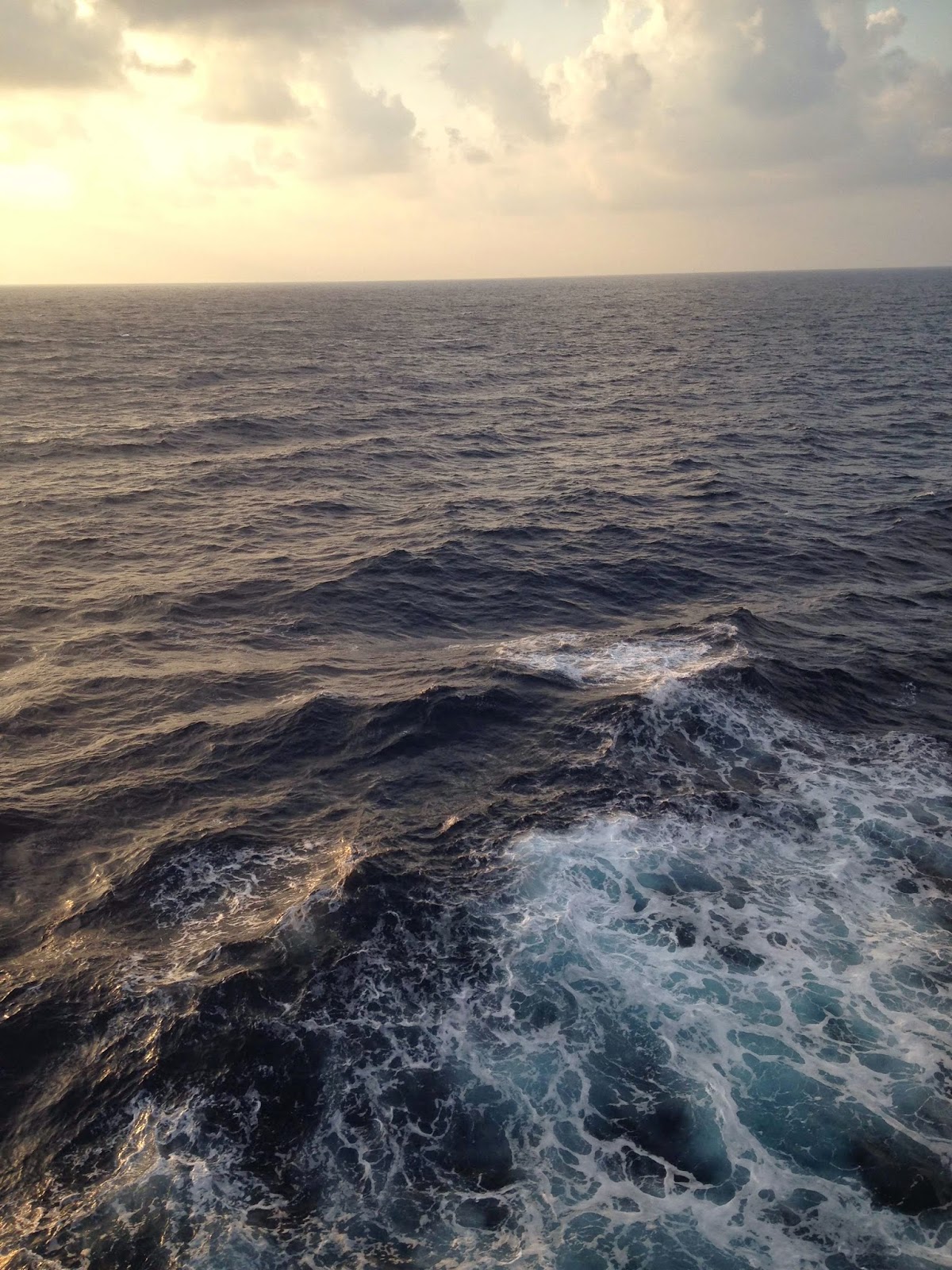I have found myself thinking regularly a thought that goes something like this: at the end of this voyage, I will have sailed much of the way around the world and have spent a lot of time watching the ocean. But all that will not amount to one tenth of how much watching I want or need.
This is a post about the sea in its many moods and about my photography of the sea. It may only have interest for people who love the sea, as I do. Noah will be back soon, I hope.
I asked my students the other day to compose an allegory: people often say life is a journey, but what if it is specifically a sea voyage? Pursuing that correlation, what would the sea be? Just the stratum upon which all life passes, I suppose: the ether, the earth, time, space, being, nothingness, everythingness. All. The void. God. The sublime eternal. Biology and/or culture, nature and/or nurture. Reality. Breath. The thing that supports you, the thing that can kill you. Most of the time on board you can and do forget it, trapped inside as you must be due to responsibilities, activities, weather, sleep. But like Socrates’s sage, now and then you can rise through the cave of the ship and behold the deep reality around you.
Change is of course the major constant of life and of the sea. “Changeable as the sea” is a tired saying. But it’s change that makes the sea beautiful, of course. Start with color:
In open, deep ocean under sunny skies, the sea is an impossible-to-describe shade of ultramarine blue, almost turquoise—the most beautiful color in the universe, if I had to choose one.
Under cloudy skies, the sea is black and silver.
Close in to shore and shallow, the sea is green/grey.
A sunset/sunrise sea can, of course, pick up any color that’s coming or going.
Just as intoxicating as the colors are the textures. A flat, windless sea can look like old wavy glass.
Sea textured by light wind looks like crinkled foil.
A rougher, “dirty” sea just looks like the death-dealer that it is.
Photographing the sea, I find myself understanding abstract art better than I ever have. There’s so much pure interest in the interplay of these colors and textures, especially when illuminated by reflected cloud-light.
Photographing the sea is not easy—creating interesting photographs, I mean. Good photographs have interesting tensions in them, tensions between the foreground and background, tensions between what’s in and out of focus, stuff like that. And they need some means of drawing your eye. The sea can in a photograph can sometimes just look like a flat (if beautiful) wallpaper:
Interest can of course be created by inserting a foreground. People make the best subjects); or the geometry of our beloved ship can jazz up a photo; and sometimes nature comes through with a little miracle, and you get interest given to you. And sometimes the sea itself will give you the tension you want.
Sunset or sunrise pictures are of course the big payoff. But it’s all really about light: the interaction of light with seawater, cloudwater, and air. There’s no better way to study light than to look at the sea.



















No comments:
Post a Comment